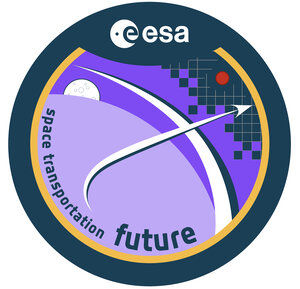Hot Plume Modelling Project
Europe’s access to space today relies primarily on the Ariane 5 family of heavy lift launchers and the Vega launcher for small payloads. The successful development of these launchers depends on finding solutions in the critical and challenging areas of propulsion and aero-thermodynamics, which are the key elements of any launch vehicle. In the past aerodynamic and aero-thermodynamic development work was almost exclusively based on the use of engineering and empirical methods.
Today the use of Computational Fluid Dynamics (CFD) has matured to the point where it can provide valuable physics based input. In addition, experimental testing is extremely expensive, time consuming and often it is impossible to simulate the real flight conditions. As a result, the data obtained from these experiments is only partially useful and approximate methods need to be used to extrapolate these data to real flight conditions.
Accurate numerical models are needed to fully simulate representative solid rocket motors, including the presence of (solid) particles and plume radiation.
An activity with GSTP Element 1 and CFS Engineering in Switzerland has been studying computational fluid dynamics, for example of rocket plumes, to understand the valuable physics-based input they provide to the launch vehicle development process.
The activity has built an improved model for the computation of plumes from solid rocket boosters, to reduce design margins for launch vehicles. The new model computes numerical simulations of hot gases with particles including chemistry, Lagrangian tracking for particles and radiation modelling for solids particles.
Called the Hot Plume Project, the work carried out was mainly concerned with the after body flow of launch vehicles, also called the base flow region. In this region, hot gases from the nozzle exit mix with the cold flow coming around the launch vehicle leading to very complex aerodynamic phenomena which is still poorly understood. As a result, there exists a large area of uncertainty in launch vehicle design.
The activity extended the Navier Stokes Multi Block (NSMB) CFD solver with a general equilibrium chemistry module and a particle tracking module, to allow the calculation of gas-solid interactions. The improved NSMB solver was then used to make calculations for the Vega solid rocket motor plume and to rebuild representative hot plume experiments, performed at DLR Cologne in a parallel activity.
A more accurate numerical representation of solid rocket plumes can now be provided, which could potentially reduce the design margins considered during launch vehicle development.
Further developments could improve radiation modeling as well as chemistry modeling.
G614-011MP closed in September 2020. The documentation is stored on the TEC-DMS.















 Germany
Germany
 Austria
Austria
 Belgium
Belgium
 Denmark
Denmark
 Spain
Spain
 Estonia
Estonia
 Finland
Finland
 France
France
 Greece
Greece
 Hungary
Hungary
 Ireland
Ireland
 Italy
Italy
 Luxembourg
Luxembourg
 Norway
Norway
 The Netherlands
The Netherlands
 Poland
Poland
 Portugal
Portugal
 Czechia
Czechia
 Romania
Romania
 United Kingdom
United Kingdom
 Slovenia
Slovenia
 Sweden
Sweden
 Switzerland
Switzerland


























